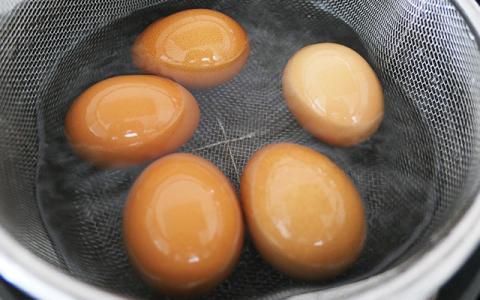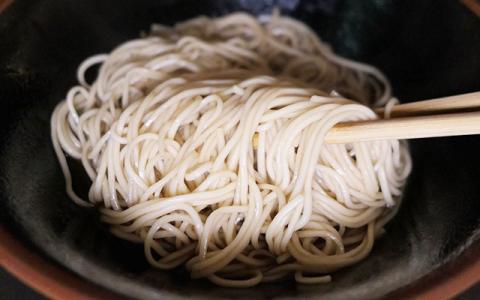
- Date
05.28.2020―09.15.2020
- Fee
Complimentary content
Streaming fee will apply
“Movie & Bites” is coming to the small screen – your screen! – with a suggested ramen-themed movie and meal pairing that the whole family can enjoy. For a delightful and delicious evening, JAPAN HOUSE invites viewers to stream “Tampopo”, Juzo Itami’s iconic “ramen Western” from 1985 (available through several online streaming sites, fees apply), alongside tips on how to prepare and enjoy instant ramen at home, and an article delving into the beloved noodle’s history.
The Movie
The story of a family-run noodle shop that is struggling to reinvent itself, “Tampopo” has delighted audiences around the world. The tale of an enigmatic band of ramen ronin who guide the widow of a noodle shop owner on her quest for the perfect recipe, “Tampopo” serves up a savory broth of culinary adventure seasoned with offbeat comedy sketches. Sweet, sexy, surreal, and mouthwatering, “Tampopo“ remains one of the most delectable examples of food on film. It’s known for its stellar cast (including Tsutomu Yamazaki, Nobuko Miyamoto, and Ken Watanabe), and hummable music by Kunihiko Murai (an influential composer and producer whose label was a champion of many artists in the City Pop movement, see recent article here), but the true star, of course, is the countless bowls of delicious, savory ramen – one of Japan’s most popular dishes.
The Backstory
Read an article about ramen’s colorful history here, and get your chopsticks ready…
The Bites
The suggested food pairing for this home screening is naturally ramen noodles. Even if you’ve never prepared ramen more advanced than instant noodles before, you can experiment with these inspiring tips to elevate your home ramen game.

Pork Chashu, Pork Belly Chashu, Chicken Chashu & Tofu Chashu
Thinly sliced chashu is excellent in your favorite ramen, and the leftover is great for adding to fried rice or on a sandwich with lettuce, cucumber and Japanese mayonnaise.
Find ingredient list and recipes here:
Marinate
- 3 lbs boneless pork butt, tied into a cylinder (see below for pork belly, chicken and tofu options)
- 2 tablespoons kosher salt
- 3 cups sake
Cook
- 1 bunch scallions, white parts only
- 3 cloves garlic, peeled and crushed
- 2-inch piece of ginger, peeled and thinly sliced
- 1 shallot, peeled and halved
- ¼ onion (white or yellow), peeled and sliced
- 2 cups soy sauce
- 2 cups sake
- 2 cups water
- ¼ cup packed brown sugar
- ¼ cup honey
Rub the salt all over the pork and place it in a Ziplock bag. Add the 3 cups of sake, seal and marinate in the fridge for at least 2 hours up to overnight.
Preheat the oven to 250 degrees. In a heavy, oven-proof pot with a lid, place the scallions, garlic, ginger, shallot and onion. Remove the pork from the sake marinade (discard the marinade), pat the pork dry and place on top of the aromatics in the pot. Add the soy sauce, sake and water, cover, and bring to a simmer over medium-low heat. Simmer for 30 minutes, then transfer the pot to the preheated oven.
Bake the covered pork in the oven for 75 minutes, then remove from the oven, turn the pork over in the pot, and add the brown sugar and honey. Cover, and continue cooking the pork for an additional 3 hours in the oven. The pork should be fairly tender and with an internal temperature of at least 145 degrees.
(If you wish to use a slow-cooker instead of the oven, skip the simmer on the stovetop step, add the aromatics, marinated pork and liquid directly to the slow cooker, and cook for the times indicated, including turning the pork and adding the honey and brown sugar after 75 minutes. The internal temperature should be at least 145 degrees when done).
Carefully remove the pork from the pot (keep the cooking liquid for marinating your soft-boiled eggs) and chill in the refrigerator until ready to use.
To serve, remove the string and slice to desired thickness before reheating (the chashu is easier sliced when cold).
For Chicken Chashu, use 3 pounds of boneless, skin-on chicken thighs. Line them up so their edges are overlapping, and roll the thighs up tightly together, skin-side out, and tie with string, then follow the directions as written for the pork butt.
For Pork Belly Chashu, use a 3-pound piece of pork belly. Roll the belly tightly, fat side out, and tie with string, then follow the directions as written for the pork butt.
Tofu Chashu
This recipe requires a bamboo sushi roller.
- 1 14-16 ounce pack firm tofu
- 1/3 cup sake
- 1/3 cup soy sauce
- 1/3 cup mirin (sweet rice cooking wine)
Remove the tofu from its liquid and pat dry. Wrap the bamboo sushi roller entirely in plastic wrap, then layer two large paper towels on the roller. Lay the tofu on the paper towels at the bottom third of the roller. Roll the tofu up in the roller, gently squeezing while rolling to remove excess liquid and form the tofu into a log shape. Tie or secure it with a rubber band in the roller and place in the refrigerator overnight.
After chilling overnight, carefully remove the rolled tofu from the bamboo roller. Place the sake, soy sauce and mirin in a skillet, bring to a boil over medium-high heat and carefully place the rolled tofu in the pan, turning it and cooking it on all sides, for a total of 3-5 minutes.
Remove the tofu and liquid from the heat, transfer to a covered dish or Ziplock bag, and chill at least two hours up to 12 hours. Slice to desired thickness and serve.

Marinated Soft-Boiled Eggs (Ajitama)
- Large eggs (however many you will need)
- Leftover chashu cooking liquid
Place the eggs in rapidly boiling water, enough to cover them completely. Cook the eggs for 7 minutes, moving them gently in the pot with a spoon to keep the yolks from settling at the bottom of the egg. Remove after 7 minutes and immediately transfer to cold water.
When cool enough to handle, peel the eggs in the water. Transfer the peeled eggs to the still-warm chashu cooking liquid, place in the refrigerator and marinate for 3-4 hours.

Ramen
There are different kinds of instant ramen: Fresh noodles (that often come with a liquid soup base), ramen in a cup (just add water) and ramen in a package (that cooks in a pot or microwave).
Find tips for making ramen and recommended toppings here:
Tips for Making Ramen
- Prep all toppings before cooking your noodles.
- Cook ramen noodles in rapidly boiling water. If using fresh noodles, fluff the noodles before putting them in the pot to keep them from sticking together.
- Do not rinse the noodles in water after cooking, and be sure to drain them well.
- If using boiled eggs as a topping and they are cold from the fridge, drop them whole in the hot water the noodles were cooked in for a minute or two to warm them up, and cut in half to serve.
- Put the noodles in your bowl first before adding broth – this will prevent the noodles from becoming soggy while adding toppings.
- Once the broth is added to the noodles, loosen the noodles in the bowl so they do not stick together.
Recommended Toppings & Enhancements:
- Sautéed vegetables such as cabbage, carrots or mushrooms. Do not add extra seasoning to these as instant ramen is already high in sodium.
- Corn and butter for miso ramen, sesame seeds for shio ramen, and dried seaweed (wakame), sliced scallions, minced onion, and a few drops of lemon or yuzu juice on either miso or shio ramen.
- For extra umami, open a dashi pack (Japanese soup stock) and sprinkle on top (this works well with shoyu, tonkotsu and miso ramen).
- If you prefer to make your own broth rather than use the seasoning packets that come with the ramen, a quick alternative is frozen bone broth seasoned with soy sauce, salt and pepper.
Images provided by Tomoko Imade Dyen
Please take a few minutes to complete a survey. Your responses will help us improve our future programming.
Take the Survey
